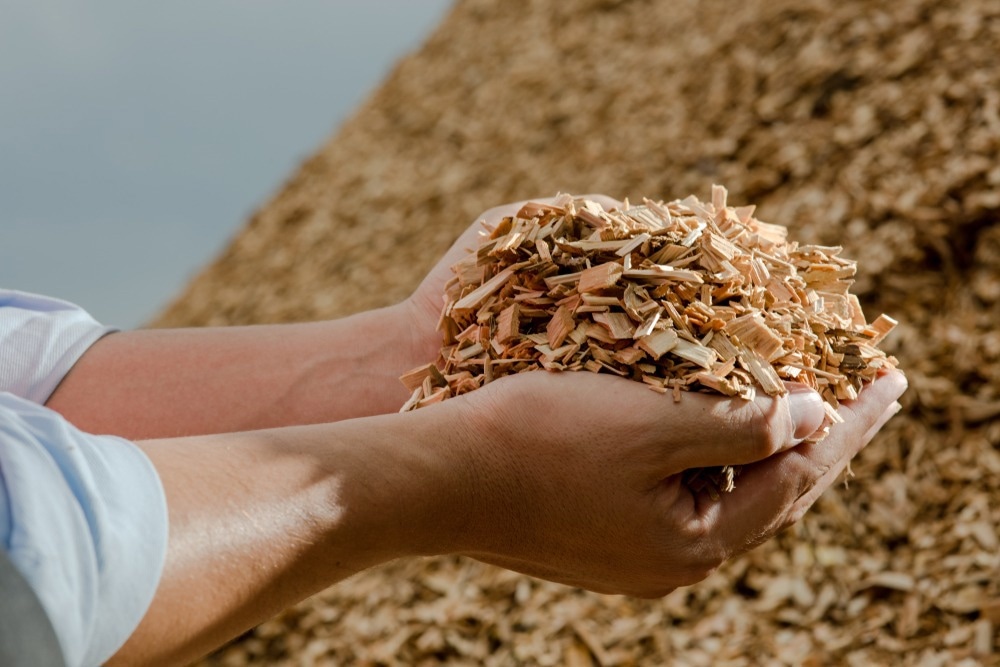In a paper recently published in the open-access journal Catalysis Today, researchers evaluated a soil-templated method for a green and economical strategy to utilize environmentally harmful waste biomass substances to produce oxygen reduction reaction (ORR) electrocatalysts for use in energy applications.

Study: Soil-templated synthesis of mesoporous carbons from biomass wastes for ORR catalysis. Image Credit: JH Bispo/Shutterstock.com
Background
The rising global energy demand, along with the continuous decline in fossil fuel reserves, has encouraged researchers to look for alternative energy sources that are environmentally friendly. In addition to renewable energy sources including solar, ocean, wind, and hydropower, the use of biomass materials in energy devices such as fuel cells, solar cells, and supercapacitors have garnered attention to fulfill energy requirements in the future.
The oxygen reduction reaction (ORR) occurring at a fuel cell’s cathode converts the fuel’s chemical energy along with environmental oxygen into electricity through an electrochemical reaction that involves a durable, electrochemically active, and efficient electrocatalyst due to the reaction’s slow kinetics. Platinum (Pt) has the best catalytic performance in ORR kinetics but is not desirable owing to its scarcity and high cost.
Since nitrogen (N) has a similar atomic size to that of carbon while being more electronegative, N-doped carbon nanomaterials and other heteroatoms are suitable electrocatalysts. However, the function of N active sites in enhancing ORR performance is being debated. Furthermore, the production of carbon-based electrocatalysts uses costlier methods and harsh chemicals, thereby not making them commercially viable.
Porous carbons derived from biomass can be advantageous in tuning the structure-property relationships required in end-product applications. Since the application performance can be affected by the porous structural arrangements, several strategies such as template-assisted synthesis, chemical and physical activation, and pre-carbonization, among others, have been used. Templating methods include hard templating, such as using graphene oxide and N-doped three-dimensional (3D) microporous carbon nanosheets, as well as soft templating, which involves the use of graphitic carbon nitride.
About the Study
In this study, self-doped porous carbons were derived from residual poultry and kitchen waste biomass using heteroatom and carbon precursors. Soil was utilized as a template as well as a biomass waste decomposition medium. A template-assisted, chemical-free preparation of these mesoporous carbons using biomass wastes was proposed.
The team used biomass residues, hydrochloric acid (HCl), and EDTA. The kitchen waste procured was grounded and thoroughly mixed in equal mass ratio with poultry waste. The bio-compost formed was collected after 20 days and then heated to remove moisture, followed by grinding into a uniform powder. The powder was then carbonized at 1,100 (sample C3), 900 (sample C2), and 700 °C (sample C1) followed by centrifugation until each sample achieved a neutral pH.
A field emission scanning electron microscope (FESEM) was used to examine the sample morphologies, while an X-ray diffractometer was used to record the sample diffractograms (XRD). The samples’ thermal stability was examined using thermogravimetric analysis (TGA), whereas a VG microtech ESCALAB 201 was used to perform the X-ray photoelectron spectroscopy (XPS). Furthermore, electrochemical studies carried out on the samples included linear sweep voltammetry (LSV) and cyclic voltammetry (CV).
Observations
The FESEM images showed porosity disruption at 1,100 °C in sample C3, as a result of pore collapse compared to samples at 700 and 900 °C. This indicated that the structure porosity can be controlled with temperature. All the samples exhibited a type IV isotherm with H2 hysteresis, pointing out that they were mesoporous and hence could be promising candidates in electrocatalytic applications.
Moreover, the investigation of XRD patterns indicated that all samples had graphitic structures, which could increase the conductivity of the electrocatalyst. Assessment of the electrochemical activity for the ORR performance of the samples showed that the C2 sample outperformed the rest of the samples.
This was further supported by LSV measurements on all the samples. Additional assessment of the electrochemical performance using the Koutecky-Levich (K-L) plots implied that a four-electron path was taken by the ORR process for the C2 sample, which directly reduced the O2 molecule to the hydroxyl species.
Conclusions
To summarize, the team prepared porous carbons doped with heteroatoms from naturally decomposed biomass wastes followed by high-temperature carbonization. The mesoporous electrocatalyst treated at 900°C exhibited larger pore sizes, higher graphitization degree, and the best electrocatalytic performance, with a high limiting current density and positive onset potential.
According to the authors, this study provides a promising strategy for the disposal and efficient utilization of household and poultry kitchen waste. The soil acts as a natural template as well as a decomposition medium for the production of porous carbons, with mesoporous distributions of the pore size along with self-doping of numerous heteroatoms. This increases the efficiency of the ORR process, and this methodology can help achieve better results in energy, environment, and catalytic applications.
More from AZoM: What is Glow Discharge Optical Emission Spectrometry?
Disclaimer: The views expressed here are those of the author expressed in their private capacity and do not necessarily represent the views of AZoM.com Limited T/A AZoNetwork the owner and operator of this website. This disclaimer forms part of the Terms and conditions of use of this website.
Source:
Jong-Hyeok Park, Prabhsharan Kaur, Jin-Soo Park, and S.S. Sekhon, Soil-templated synthesis of mesoporous carbons from biomass wastes for ORR catalysis, Catalysis Today, (2021) doi: https://doi.org/10.1016/j.cattod.2022.08.011